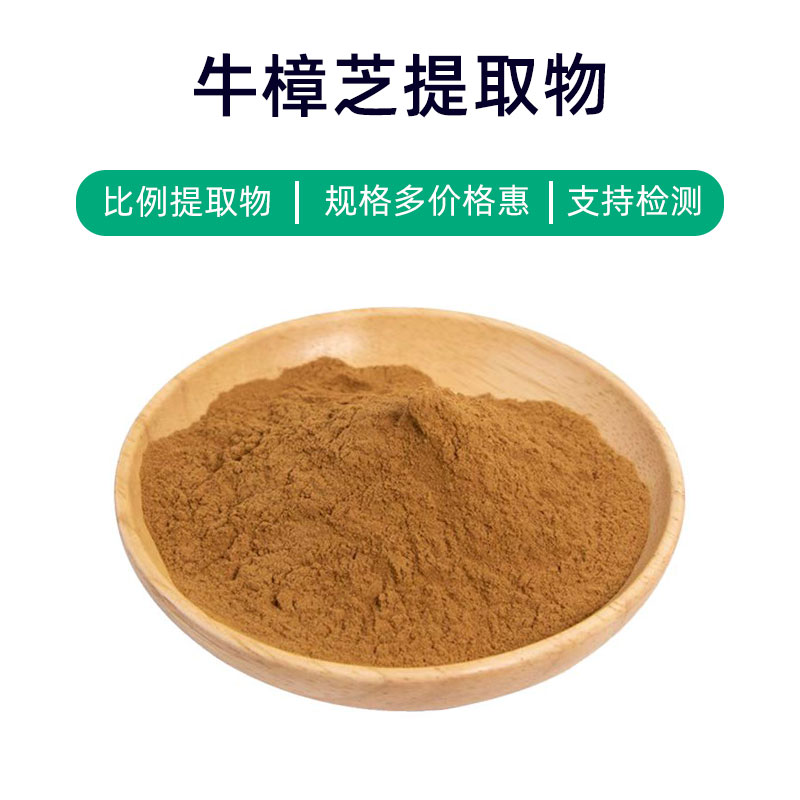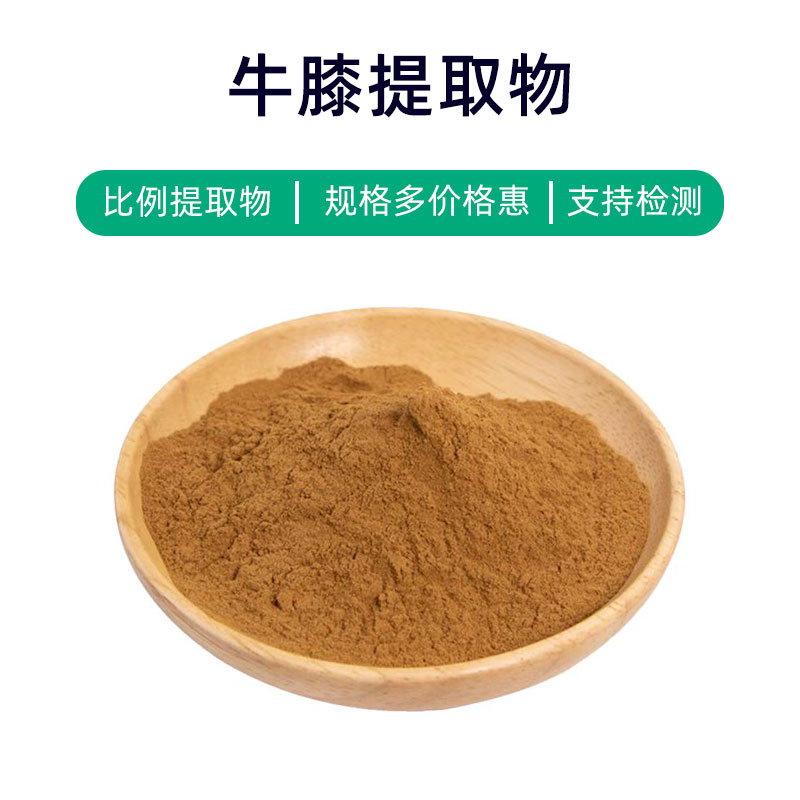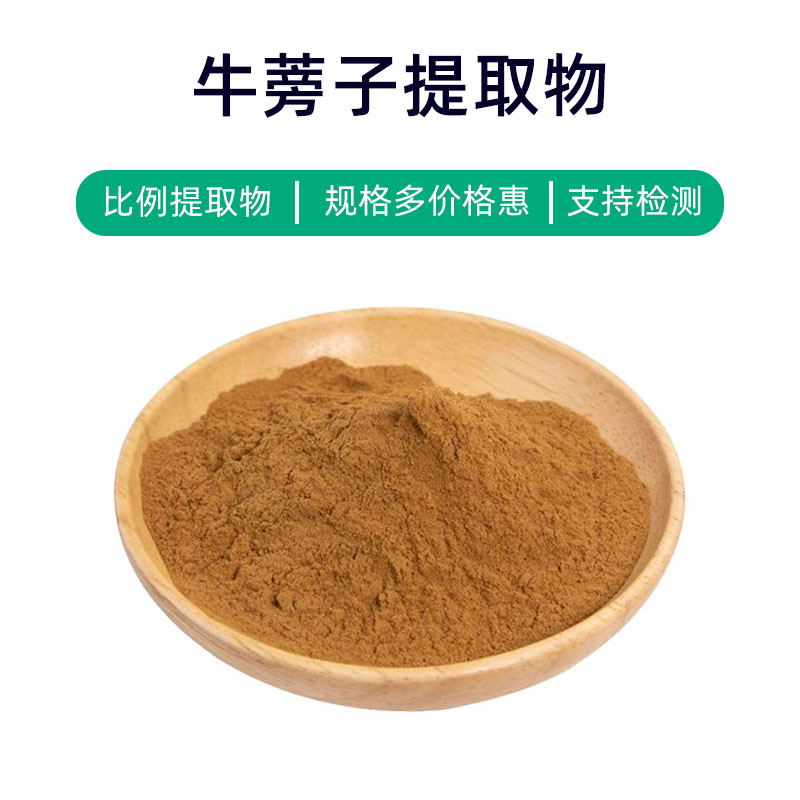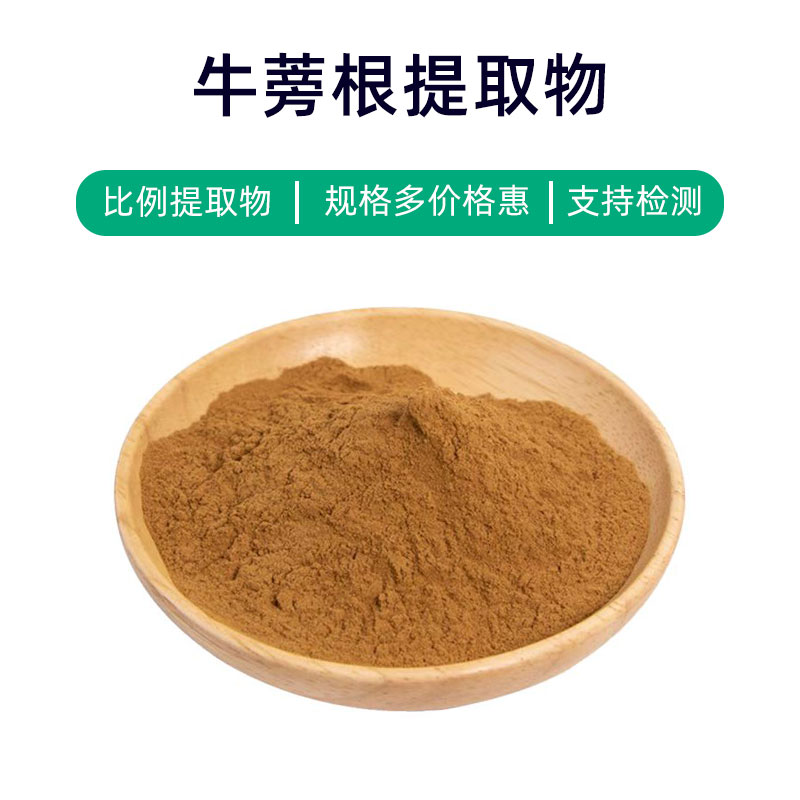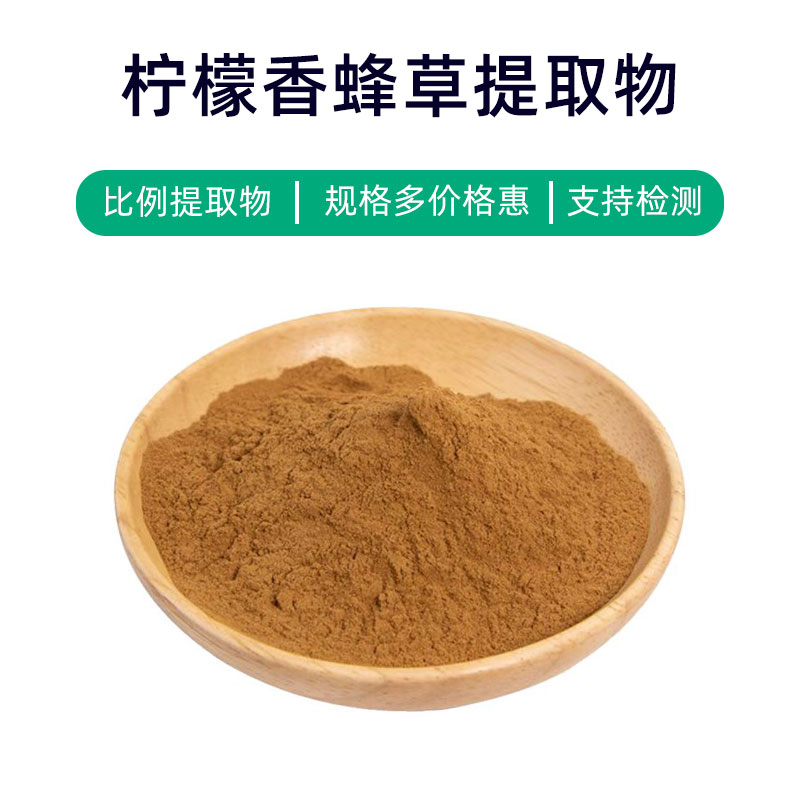Burdock Extract Product Introduction
Burdock extract is a natural plant extract derived from the roots of burdock (scientific name: Arctium lappa), featuring main ingredients such as polysaccharides, flavonoids, and polyphenols. These components provide various benefits and applications.
- Main Ingredients:
- Polysaccharides: Help with moisturizing and nourishing the skin, alleviating dryness.
- Flavonoids: Have antioxidant and anti-inflammatory effects, protecting the skin from environmental damage.
- Polyphenols: Combat free radicals and help slow down the skin aging process.
- Benefits:
- Antioxidant: The polyphenols in burdock extract can neutralize free radicals, slowing down skin oxidation and promoting skin health.
- Anti-Inflammatory: Flavonoids can help relieve skin inflammation and reduce discomfort.
- Moisturizing: Polysaccharides increase skin hydration, keeping it smooth and supple.
- Applications:
- Cosmetics: Used in skincare products, masks, lotions, etc., for moisturizing, antioxidant properties, and soothing the skin.
- Food: Added to health supplements to enhance immunity and improve gut health.
- Medicine: Used to prepare topical ointments or sprays for treating skin issues like inflammation and eczema.
Overall, burdock extract is a natural plant extract with multiple benefits, extensively used in cosmetics, food, and pharmaceuticals, promoting skin health and overall wellness.
Burdock Extract Production Process
The production process for burdock extract typically involves the following main steps:
- Raw Material Preparation: Select fresh burdock roots, wash and process them to ensure quality and cleanliness.
- Crushing and Grinding: Grind the cleaned burdock roots into fine particles to facilitate the extraction process.
- Maceration or Solvent Extraction: Add an appropriate solvent (like ethanol or water) to the ground roots and perform the extraction process to dissolve the target components.
- Filtration and Separation: Filter the extract to remove solid impurities, resulting in a clear liquid.
- Concentration: Concentrate the clear extract to remove excess solvent, yielding a concentrated burdock extract liquid.
- Drying: Dry the concentrated extract, typically using spray drying or vacuum drying techniques, turning it into a powdered form.
- Crushing and Screening: Crush and screen the dried burdock extract to ensure uniform fine powder, typically at a particle size of 80-100 mesh.
- Quality Testing: Conduct quality tests on the produced burdock extract, including active ingredient content, microbial indicators, and heavy metals, to ensure compliance with standards and regulations.
- Packaging and Storage: Package the qualified burdock extract, usually in sealed containers to prevent air, moisture, and light exposure, and store it in a cool, dry environment to maintain the stability of active ingredients.
The entire production process requires strict control of parameters and conditions at each stage to ensure product quality and stability, meeting customer and market demands.
Burdock Extract Benefits and Side Effects
Burdock extract, derived from the roots of the burdock plant, offers a variety of benefits and effects, including:
- Antioxidant Effects:
- Rich in polyphenols and flavonoids, burdock extract has strong antioxidant properties.
- Its antioxidant capacity neutralizes free radicals, reducing oxidative damage and protecting cells from environmental harm.
- Anti-Inflammatory and Antimicrobial:
- Flavonoids in burdock extract possess anti-inflammatory properties, alleviating skin irritation and itching.
- It also has some antibacterial effects that help reduce the proliferation of skin bacteria and fungi, improving skin conditions.
- Moisturizing:
- The polysaccharides in the extract provide excellent hydration, increasing skin moisture levels.
- Particularly effective for dry skin, it addresses dryness and roughness, leaving the skin soft and smooth.
- Inhibition of Melanin Production:
- Some components in burdock extract can inhibit melanin production, helping to reduce the formation of dark spots.
- Widely used in whitening skincare products, it aids in addressing uneven skin tone, making the complexion brighter and more uniform.
- Wound Healing Promotion:
- Burdock extract has certain healing properties, promoting wound healing and skin repair.
- It can relieve the effects of minor cuts, burns, and sunburns, accelerating the recovery of the skin to health.
Side Effects:
- Generally, burdock extract is considered to have fewer side effects as a natural plant extract.
- However, some individuals may experience allergic reactions, so it is recommended to perform a patch test before use. If any allergy symptoms occur, discontinue use immediately.
Overall, burdock extract is a natural plant extract with antioxidant, anti-inflammatory, moisturizing, whitening, and healing properties, widely applied in cosmetics, skincare products, and pharmaceuticals. However, individual differences exist, and those with allergies should use caution.
Burdock Extract Applications and Dosage
As a natural plant extract, burdock extract has a broad range of applications and dosages in the fields of medicine, food, and cosmetics. Below are key points regarding these aspects.
Applications in Medicine
- Skin Care:
- Application Scenario: Commonly used in topical ointments, gels, or sprays to treat skin inflammation, eczema, acne, and other inflammatory skin issues.
- Dosage: Add burdock extract at a concentration of 2%-5% to the pharmaceutical base and apply to the affected area.
- Wound Healing:
- Application Scenario: Promotes wound healing, reduces infection risks, and accelerates skin repair.
- Dosage: Incorporate the extract into wound healing ointments or sprays, using as directed by a healthcare professional.
Applications in Food
- Natural Coloring Agent:
- Application Scenario: Used as a food additive to color foods and enhance visual appeal.
- Dosage: Typically used at a concentration of 0.01%-0.1% of the total formulation, depending on the type of food.
- Health Supplements:
- Application Scenario: Used as an additive in health supplements to boost immunity and regulate gut function.
- Dosage: Added according to the requirements of the health supplement formulation, usually 0.1%-0.5% of the total formulation.
Applications in Cosmetics
- Skincare Products:
- Application Scenario: Incorporated into creams, lotions, and serums for moisturizing, antioxidant effects, and skin soothing.
- Dosage: Generally recommended at 1%-3% of the total product formulation, adjusted according to skin type and needs.
- Beauty Products:
- Application Scenario: Used in whitening and anti-aging products to address uneven skin tone and reduce dark spots.
- Dosage: Typically 2%-5% in whitening products, with amounts adjusted based on specific formulation requirements for anti-aging products.
In summary, burdock extract is versatile across medicine, food, and cosmetics, with varying applications and dosages based on specific scenarios and product types. It is essential to follow formulation guidelines and standard dosages to avoid adverse effects from excessive usage.
Introduction to the Plant Source of Burdock Extract, Distribution, and Growing Environment
Burdock (scientific name: Arctium lappa) is a perennial herbaceous plant belonging to the Asteraceae family, with its roots being the primary source for extracting burdock extract. Below is a detailed introduction to the source, distribution, and growing environment of burdock.
Source Plant Introduction
Burdock is a plant native to the Eurasian continent, also widely introduced and cultivated in other regions. It typically grows in temperate and subtropical areas, exhibiting strong vitality and adaptability. The external characteristics of burdock include:
- Plant Structure: Burdock plants are tall, usually reaching heights of 1-2 meters, sometimes even higher. The stem is upright, slightly branched, with large, broad leaves that are heart-shaped or oval, featuring wavy serrated edges.
- Flowers: The flowers of burdock are relatively small, forming head-like flower clusters that are spherical or hemispherical, generally purple or pink in color, blooming during summer.
The root of burdock is its main part, rich in various active components such as polysaccharides, flavonoids, and polyphenols, making it widely utilized in medicinal and health contexts.
Distribution
Burdock has a broad distribution range, primarily across various regions of Eurasia, including but not limited to the following areas:
- Europe: Burdock is widely found throughout Europe, including countries and regions such as France, Germany, the United Kingdom, and Italy.
- Asia: Burdock also grows in several Asian countries, including China, Japan, Korea, and India.
- North America: There are records of burdock growth in some North American areas, including the United States and Canada.
Burdock has a wide distribution range, mainly thriving in temperate and subtropical climates, but can also adapt to certain degrees of cold and dry environments.
Growing Environment
Burdock's growing environment is relatively broad but is better suited to the following conditions:
- Soil: Burdock prefers well-drained, fertile soil, ideally loose, rich, and moist; it has relatively modest soil requirements.
- Light: Burdock thrives in ample sunlight but can also survive in partially shaded or shaded environments; it shows strong adaptability to light conditions.
- Humidity: Burdock thrives in humid climates and requires a moisture-rich environment for optimal growth and development.
In conclusion, burdock is a perennial plant widely distributed in temperate and subtropical regions, with some adaptability to soil and light conditions, representing an important plant resource with medicinal and health value.
Processing and Storage of Burdock Extract
The processing of burdock extract typically involves the following steps: first, wash and initially process the collected burdock roots; then, perform maceration or solvent extraction to obtain the target components; subsequently, carry out the processes of filtration, concentration, and drying to finally produce the extract. For storage, it is recommended to keep it in a cool, dry environment, avoiding direct sunlight and humidity, and to seal it properly to maintain the stability of active ingredients.
Monica Sun is a seasoned expert in the plant extraction industry with over a decade of experience in research and production. She specializes in the extraction and purification of plant active ingredients, focusing on driving innovation in natural product applications. Monica has participated in the development of multiple functional plant extracts, delivering high-value natural raw material solutions for the health food, pharmaceutical, and dietary supplement sectors.









